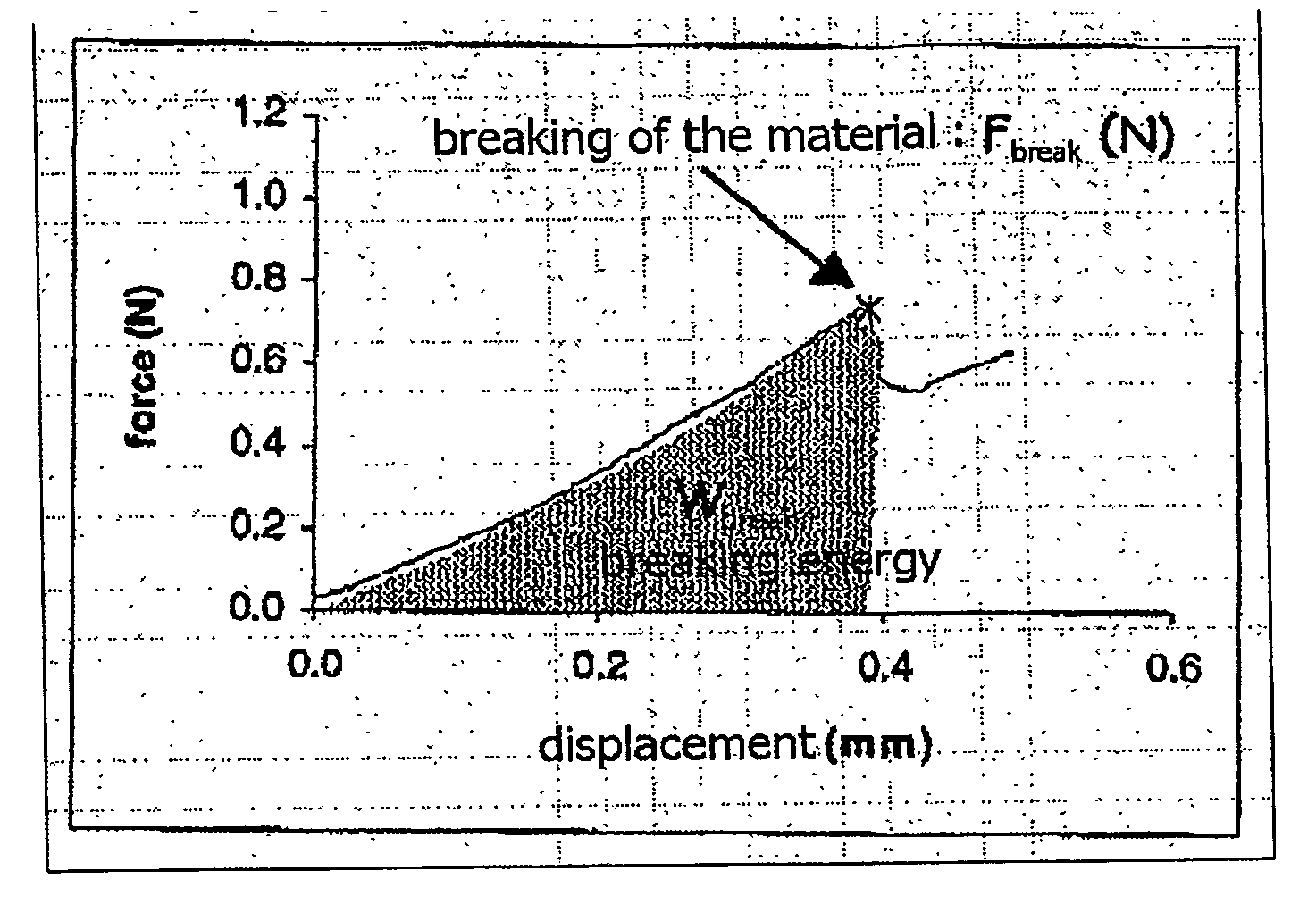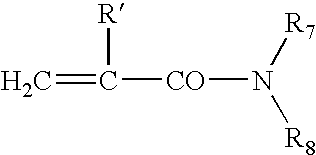Cosmetic composition comprising a tensioning agent and a particular block ethylenic polymer
a technology of tensioning agent and ethylene, which is applied in the field of cosmetic compositions, can solve the problems of fatigue marks, wrinkles that are effective to treat, fatigue marks disappear, even temporary,
- Summary
- Abstract
- Description
- Claims
- Application Information
AI Technical Summary
Problems solved by technology
Method used
Image
Examples
first embodiment
[0185] According to a first embodiment, the polymer according to the invention comprises a first block with a Tg of greater than or equal to 40° C., as described above in a) and a second block with a Tg of less than or equal to 20° C., as described above in b).
[0186] Preferably, the first block with a Tg of greater than or equal to 40° C. is a copolymer derived from monomers which are such that the homopolymer prepared from these monomers has a glass transition temperature of greater than or equal to 40° C., such as the monomers described above.
[0187] Advantageously, the second block with a Tg of less than or equal to 20° C. is a homopolymer derived from monomers which are such that the homopolymer prepared from these monomers has a glass transition temperature of less than or equal to 20° C., such as the monomers described above.
[0188] Preferably, the proportion of the block with a Tg of greater than or equal to 40° C. ranges from 20% to 90%, better still from 30% to 80% and eve...
second embodiment
[0228] According to a second embodiment, the polymer according to the invention comprises a first block with a glass transition temperature (Tg) of between 20 and 40° C., in accordance with the blocks described in c) and a second block with a glass transition temperature of less than or equal to 20° C., as described above in b) or a glass transition temperature of greater than or equal to 40° C., as described in a) above.
[0229] Preferably, the proportion of the first block with a Tg of between 20 and 40° C. ranges from 10% to 85%, better still from 30% to 80% and even better still from 50% to 70% by weight of the polymer.
[0230] When the second block is a block with a Tg of greater than or equal to 40° C., it is preferably present in a proportion ranging from 10% to 85%, better still from 20% to 70% and even better still from 30% to 70% by weight of the polymer.
[0231] When the second block is a block with a Tg of less than or equal to 20° C., it is preferably present in a proporti...
example 1
[0280] This example illustrates the preparation of a poly(isobornyl acrylate / methyl methacrylate / 2-ethylhexyl acrylate) polymer and of a composition comprising this polymer in combination with a tensioning agent in the form of an aqueous dispersion of colloidal silica. [0281] Preparation of poly(isobornyl acrylate / methyl methacrylate / 2-ethylhexyl acrylate)
[0282] 100 g of isododecane are introduced into a 1 litre reactor and the temperature is then increased so as to pass from room temperature (25° C.) to 90° C. over 1 hour.
[0283] 150 g of isobornyl acrylate, 60 g of methyl methacrylate, 110 g of isododecane and 1.8 g of 2,5-bis(2-ethylhexanoylperoxy)-2,5-dimethylhexane (Trigonox® 141 from Akzo Nobel) are then added, at 90° C. and over 1 hour.
[0284] The mixture is maintained at 90° C. for 1 hour 30 minutes.
[0285] 90 g of 2-ethylhexyl acrylate, 90 g of isododecane and 1.2 g of 2,5-bis(2-ethylhexanoylperoxy)-2,5-dimethylhexane are then introduced into the above mixture, still at 90...
PUM
| Property | Measurement | Unit |
|---|---|---|
| shrinkage | aaaaa | aaaaa |
| shrinkage | aaaaa | aaaaa |
| shrinkage | aaaaa | aaaaa |
Abstract
Description
Claims
Application Information
 Login to view more
Login to view more - R&D Engineer
- R&D Manager
- IP Professional
- Industry Leading Data Capabilities
- Powerful AI technology
- Patent DNA Extraction
Browse by: Latest US Patents, China's latest patents, Technical Efficacy Thesaurus, Application Domain, Technology Topic.
© 2024 PatSnap. All rights reserved.Legal|Privacy policy|Modern Slavery Act Transparency Statement|Sitemap



